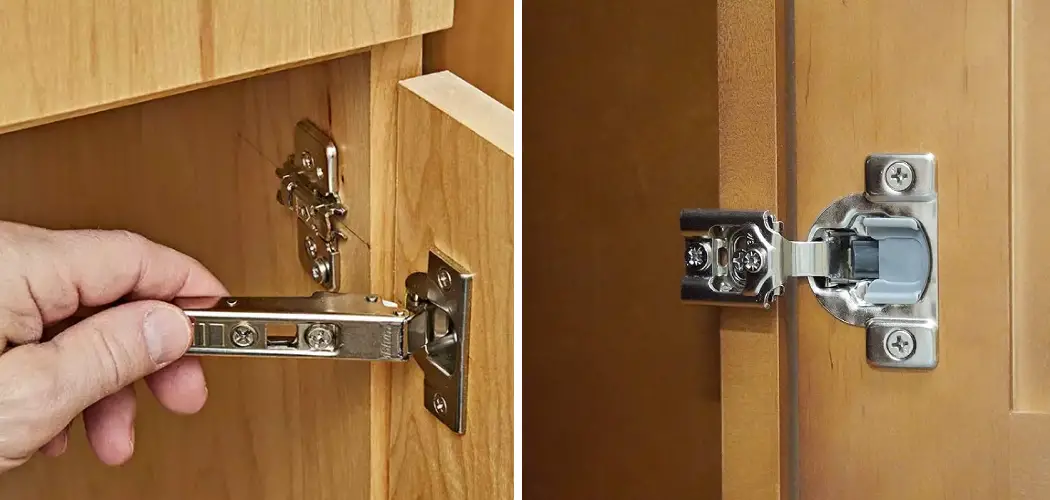Hidden hinges are a great way to upgrade any kitchen cabinets. Not only can they make your cabinet doors look sleeker and more modern, but they also allow for smoother operation compared to typical exposed cup-style hinges. If you’re looking to update the existing cabinets in your home, learning how to install hidden hinges on face frame cabinets is essential.
In this post, we’ll discuss the simple steps needed for the successful installation of these efficient and unobtrusive hardware pieces. Keep reading if you want a custom touch that makes all the difference in completing your dream kitchen!
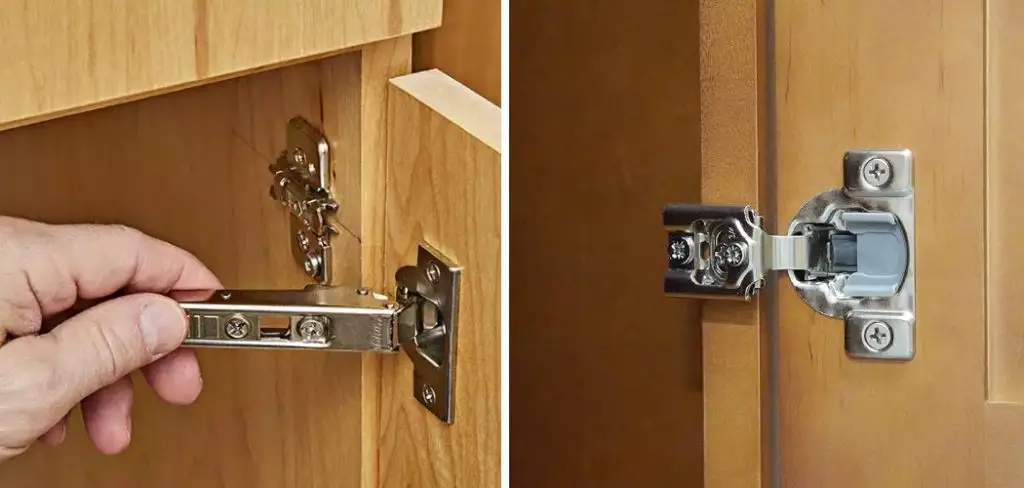
Needed Tools and Materials
Given below are the tools and materials you’ll need for installing hidden hinges on face frame cabinets.
- Hidden Hinges
- Drill/Driver
- Hinge template (optional but recommended)
- Pencil
- Screws
- Screwdriver
Now that we have everything ready, let’s dive into the installation process!
10 Step-by-step Guidelines on How to Install Hidden Hinges on Face Frame Cabinets
Step 1: Preparation
Start by removing the cabinet doors from their frames. Once done, carefully lay them down on a smooth and clean surface. It’ll provide you with more space to work and prevent any damage to the cabinets.
But before removing the doors, mark them with a numbering system so that you can quickly reattach them later. It’s especially helpful if you’re working with multiple cabinet doors.
Step 2: Measure and Mark the Hinge Position
Place your hinge template on the back of the door in the top corner. Use a pencil to mark around it, indicating where you need to drill for the screws. You can also use a ruler to get precise measurements if you don’t have a template.
It’s crucial to make sure that the hinges are evenly aligned on both sides of the door for a professional finish.
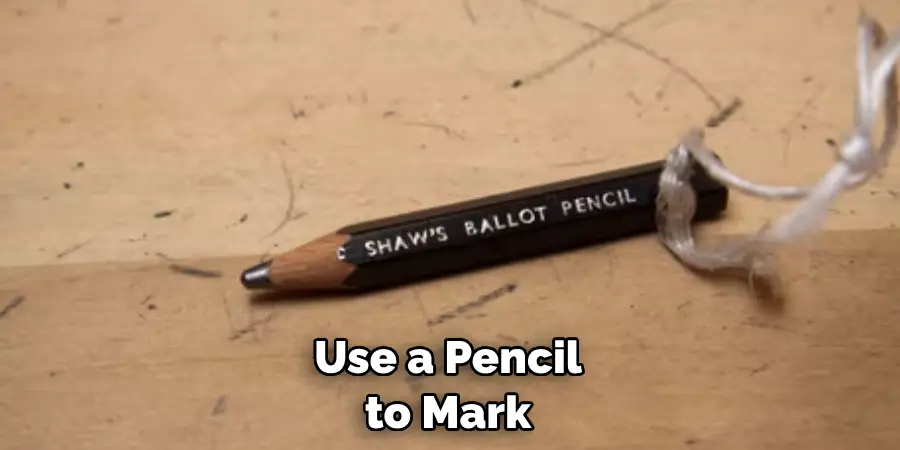
Step 3: Drill Holes
Drill pilot holes on the marked spots using a drill/driver, making sure you don’t go all the way through the door. But if you do, don’t worry; it won’t affect the door’s functionality. It’s better to have the holes on the hinge side of the door rather than the outer frame.
It helps keep everything out of sight. You can also use a drill press for consistent and accurate holes. You should also drill holes on the opposite side of the door frame.
Step 4: Install the Hinge Plates
Place the hinge plates on the holes you just drilled. Secure them with screws using a screwdriver. Make sure they’re flush with the door surface. It would be best to have someone hold the plates in place while you screw them in for more stability.
While the standard hidden hinges are adjustable, some may require you to drill precise holes for the screws. Refer to your hinge’s instructions for more specific guidance. But always remember to double-check the alignment before screwing the plates.
Step 5: Repeat for the Other Door
Repeat steps 2-4 for the other cabinet door, making sure both hinges are installed at equal distances from the top and side of the cabinet doors. If you’re working with multiple cabinet doors, it’s essential to keep them consistent throughout.
Step 6: Install the Hinges on the Cabinet Frame
Start by holding one of the drilled and marked doors against its frame. Align the hinges’ back plates with the marks made earlier and screw them in place. Repeat for all hinges on both sides.
This step ensures that your new concealed hinges operate smoothly and without any hindrance. It’s also helpful to have someone hold the door in place while you screw it in for a more stable installation.
Step 7: Check and Adjust Hinge Placement
Once all hinges are installed, carefully open and close the cabinet doors. If they don’t close correctly or seem unaligned, you may need to adjust the hinge placement by loosening the screws and moving them accordingly. For a perfect finish, make sure the doors close evenly and have equal gaps around them.
It may take a few tries to get it right, but don’t worry; it’s all part of the process. But once you get the hang of it, installing hidden hinges will be a breeze! It’s also crucial to make sure the doors don’t rub against each other or the frame when opening and closing.

Step 8: Repeat for the Other Side
Install hinges on the other side of the frame, following the same process as in steps 6-7. This step ensures that all doors operate smoothly and have a uniform look. You can also install a soft-close mechanism if your hidden hinges come with the option.
But it’s not necessary as most hidden hinges have a built-in self-closing feature. You can also adjust the door’s tension by turning the hinge screw clockwise or counterclockwise.
Step 9: Reattach Cabinet Doors
Once the hinges are installed on both doors and the cabinet frame, it’s time to reattach them. Align the hinges on the cabinet door with those on the frame and screw them into place using a screwdriver.
This step ensures that the doors are securely in place and operate smoothly. It’s also helpful to have someone hold the doors while you screw them in for a more stable installation.
Step 10: Test Operation
Finally, test the operation of your newly installed hidden hinges by opening and closing the cabinet doors. If everything looks good, you’re done! Always make sure to check and adjust the hinge placement if you notice any issues with closing or alignment. Otherwise, sit back and admire your beautifully concealed hinges that add a touch of elegance to your face frame cabinets.
Following this step-by-step guide, you can easily install hidden hinges on your face frame cabinets and elevate their look. Make sure to take your time and double-check everything for a professional finish. And don’t forget to have fun while doing it! Happy hinge installation! # How to Install Hidden Hinges on Face Frame Cabinets
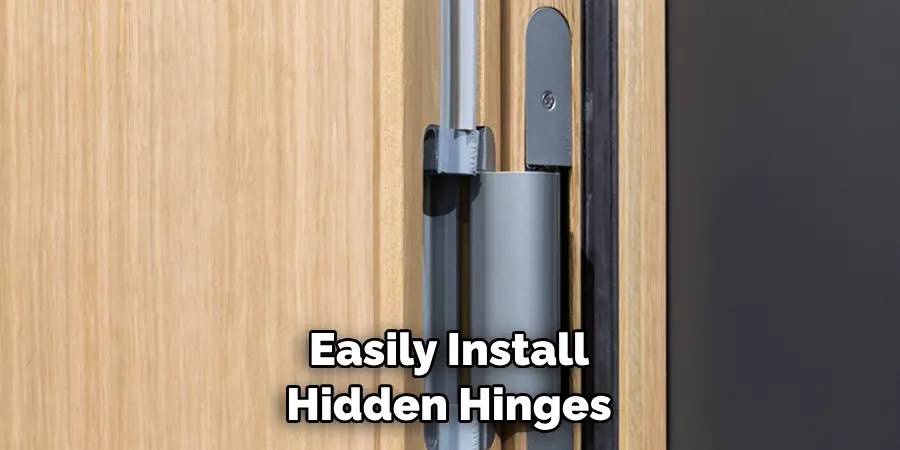
Additional Tips for Installing Hidden Hinges
Now that you know the basic steps involved in installing hidden hinges on face frame cabinets, here are a few additional tips to keep in mind:
- Always Use a Hinge Template or Measure Precisely for Accurate Installation.
- Take Your Time and Be Patient During the Process. Rushing Can Result in Unevenly Installed Hinges.
- If You Have Trouble Aligning the Hinges, You Can Slightly Enlarge the Pilot Holes With a Larger Drill Bit.
With these tips and the simple steps on how to install hidden hinges on face frame cabinets mentioned above, you can easily upgrade your kitchen cabinets with hidden hinges. So go ahead and add a touch of modernity to your home!
So, don’t wait any longer, get started on installing those hidden hinges and give your cabinets the makeover they deserve. Happy renovating! Keep learning with our easy-to-follow tutorials for all your DIY needs.
Frequently Asked Questions
Q: Can Hidden Hinges Be Installed on Any Type of Cabinet?
A: Yes, hidden hinges can be installed on both face frames and frameless cabinets. It’s important to choose the right hinges for your cabinet type. It’s also crucial to ensure that the hidden hinges you purchase are compatible with your cabinet doors and frame.
Q: Do I Need any Special Skills or Tools to Install Hidden Hinges?
A: No, you don’t need any special skills or tools. However, using a hinge template or precise measurements is recommended for accurate installation. You will need a drill, screws, and a screwdriver for the installation process.
Q: How Many Hinges Should I Use Per Cabinet Door?
A: It’s best to use two hidden hinges per cabinet door for proper support and stability. However, larger and heavier doors may require additional hinges for better functionality. But always refer to the manufacturer’s instructions for specific recommendations.
Q: Are There Any Specific Maintenance Requirements for Hidden Hinges?
A: Not really, hidden hinges don’t require any special maintenance. However, you can lubricate them occasionally to ensure smooth operation. It’s also recommended to check and adjust the hinge placement if you notice any issues with closing or alignment.
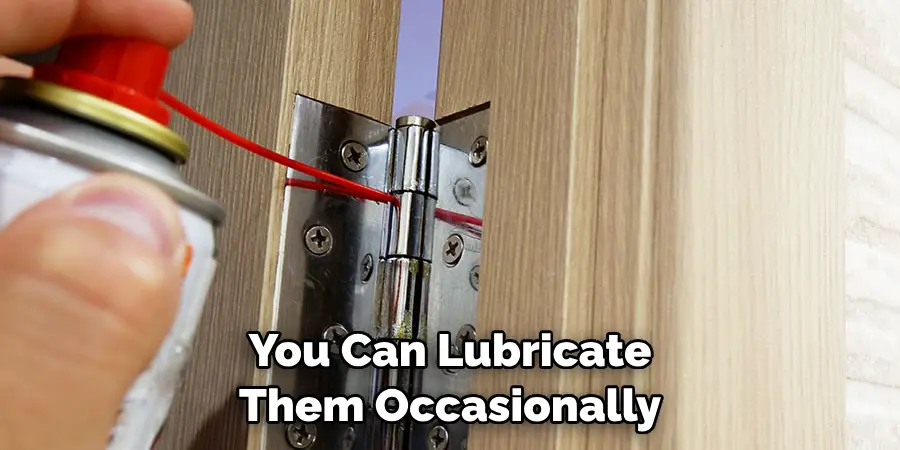
Conclusion
Now that you know how to install hidden hinges on face frame cabinets, it’s time to get started with your own project! Get all the ingredients and tools needed for the job and start by measuring, drilling and assembling. While there may be a learning curve in the beginning, once you get the basics down you’ll be able to tackle different cabinet projects with ease.
Don’t forget to come back and visit us if you have any questions along the way. We are here to help make sure your cabinetry projects look their best! Now, take this information and let’s get those hinges installed – best of luck on your next project!

